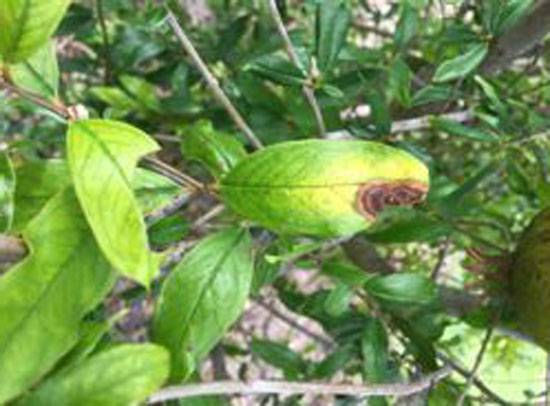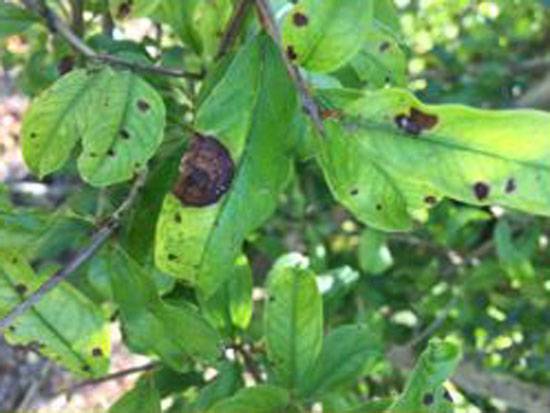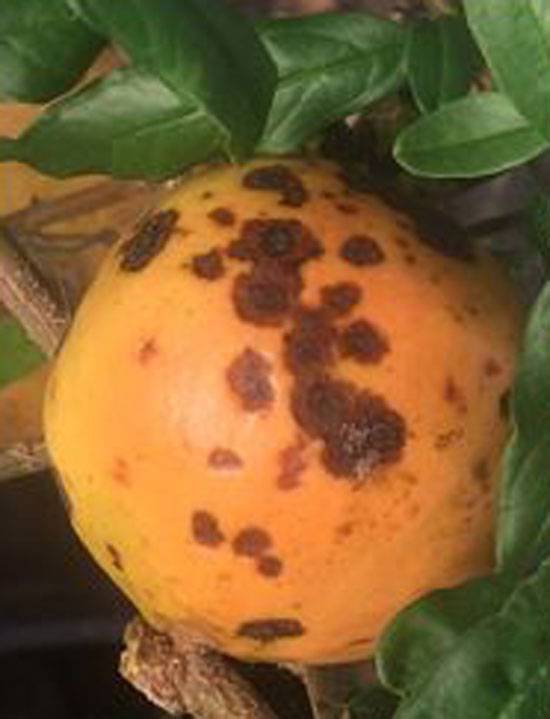Pomegranate
Leaf and Fruit Spots

Pseudocercospora punicae,Dwiroopa punicae
Fungal Disease

Pseudocercospora punicae,Dwiroopa punicae
Fungal Disease

Pseudocercospora punicae,Dwiroopa punicae
Fungal Disease

Pseudocercospora punicae,Dwiroopa punicae
Fungal Disease

Pseudocercospora punicae,Dwiroopa punicae
Fungal Disease
Leaf and fruit spot diseases in pomegranates are caused by various fungal pathogens, leading to significant damage and yield reduction if not managed properly.
Leaf Spot Symptoms
- Initial Symptoms: Small, irregularly shaped dark brown lesions (0.1–0.3 cm) appear on the leaves.
- Progression: These lesions can expand to 0.5–1.2 cm, developing a distinct dark brown margin with a gray center. Concentric rings of alternating dark and light gray may form in the lesion center.
- Halo Effect: A greenish halo often surrounds the lesions, which becomes more pronounced as the affected leaves yellow due to chlorosis.
- Defoliation: As the disease progresses, leaves senesce, leading to severe defoliation that can adversely affect fruit yield.
Fruit Spot Symptoms
- Initial Symptoms: Small, irregular black lesions appear on the fruit.
- Progression: These lesions can coalesce into larger blotches. Unlike lesions caused by Colletotrichum or other fungal pathogens, the lesions from P. punicae are superficial and typically affect only the surface of the fruit, not the rind or arils.
Varietal Variation
The symptoms on leaves and fruits can vary depending on the pomegranate variety, with some varieties being more susceptible to these spots than others.
Effective management involves regular monitoring, proper sanitation, and the use of appropriate fungicides to control the spread of these diseases and mitigate their impact on pomegranate production.




